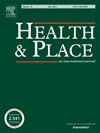Influence pathways of noise exposure on people's negative emotions and health across different activity contexts: A neural network-based double machine learning approach
IF 3.8
2区 医学
Q1 PUBLIC, ENVIRONMENTAL & OCCUPATIONAL HEALTH
引用次数: 0
Abstract
Noise is a major global environmental issue that raises concerns about both mental and physical health. However, few studies have investigated the mediating role of emotions in the pathways linking noise exposure to health outcomes. Additionally, many studies have overlooked the varying effects of noise across different activity contexts. Most importantly, previous research has predominantly relied on correlational analysis, offering limited evidence of causality. In this study, we utilize real-time data from an environmental health survey of 800 residents in Hong Kong collected between 2021 and 2023 and apply a neural network-based Double Machine Learning model to estimate the pathways through which noise influences emotional states and health outcomes. Our findings reveal that (1) noise during travel significantly heightens real-time annoyance, while noise at home primarily increases real-time stress; (2) annoyance strongly contributes to headaches, whereas stress predominantly leads to insomnia and fatigue; and (3) noise at home directly triggers insomnia and fatigue, whereas noise during travel not only directly causes insomnia and headache but also indirectly exacerbates insomnia, fatigue, and headache through heightened annoyance. In contrast, noise in the workplace and outdoors has a limited impact on insomnia, fatigue, and headaches. This study provides valuable insights into the pathways through which noise influences negative emotional states and, subsequently, health outcomes, offering a methodological framework for unraveling the "black box" of environmental health relationships.

不同活动背景下噪声暴露对人的负面情绪和健康的影响途径:基于神经网络的双机器学习方法
噪音是一个主要的全球性环境问题,它引起了人们对身心健康的关注。然而,很少有研究调查情绪在连接噪音暴露与健康结果的途径中的中介作用。此外,许多研究忽略了噪音在不同活动环境中的不同影响。最重要的是,以前的研究主要依赖于相关分析,提供的因果关系证据有限。在这项研究中,我们利用从2021年至2023年收集的800名香港居民的环境健康调查的实时数据,并应用基于神经网络的双机器学习模型来估计噪音影响情绪状态和健康结果的途径。研究发现:(1)出行噪声显著增加了实时烦恼,而家庭噪声主要增加了实时压力;(2)烦恼会导致头痛,而压力则会导致失眠和疲劳;(3)家中的噪音直接导致失眠和疲劳,而旅行中的噪音不仅直接导致失眠和头痛,而且通过增加烦恼间接加剧失眠、疲劳和头痛。相比之下,工作场所和户外的噪音对失眠、疲劳和头痛的影响有限。这项研究为噪音影响消极情绪状态以及随后影响健康结果的途径提供了有价值的见解,为解开环境健康关系的“黑箱”提供了方法论框架。
本文章由计算机程序翻译,如有差异,请以英文原文为准。
求助全文
约1分钟内获得全文
求助全文
来源期刊

Health & Place
PUBLIC, ENVIRONMENTAL & OCCUPATIONAL HEALTH-
CiteScore
7.70
自引率
6.20%
发文量
176
审稿时长
29 days
期刊介绍:
he journal is an interdisciplinary journal dedicated to the study of all aspects of health and health care in which place or location matters.
 求助内容:
求助内容: 应助结果提醒方式:
应助结果提醒方式:


